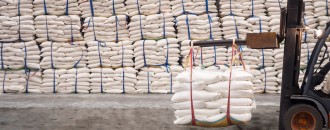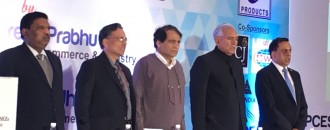
Indian export control regime revamped; overhaul of SCOMET list
By Ranjeet Mahtani, Suhasini Joshi & Darshan Bora
Globally, export control regimes are designed to control the export of dual-use goods and technologies which can be used in both - civilian as well as military applications. Among other things, export control regulations involve subjecting exports of specified items to prior authorization / licensing. The objective is to prevent illegitimate trade in such dual-use items and control the export of products to countries that are considered as a national threat.
Recent overhaul of Indian SCOMET list
The Indian Export Control regulations have been significantly overhauled by the Directorate General of Foreign Trade (DGFT) with effect from May 1, 2017. The amendments seek to revise the Special Chemical, Organisms, Materials, Equipment and Technologies category (SCOMET) list relating to dual-use goods and technologies.
These changes have been brought about as part of India’s continuing obligations as a member of the Missile Technology Control Regime and as an adherent to the Nuclear Suppliers Group Guidelines. It also seeks to align with the guidelines and control lists of the Wassenaar Arrangement and the Australia Group, two multilateral export control regimes that India wishes to join. The amendments have been introduced vide Notification No. 5/2015-2020 dated 24.04.2017, and are already in force w.e.f. 1st May, 2017.
The amendments could potentially have a far reaching impact on Indian exporters of goods/technology (including R&D) which is covered under the SCOMET.
Key changes
A new Category 8 has been introduced under the SCOMET for “Special Materials and Related Equipment, Material Processing, Electronics, Computers, Telecommunications, Information Security, Sensors, and Lasers, Navigation and Avionics, Marine, Aerospace and Propulsion”. Some of the significant items covered under Category 8 include items employing cryptographic information security and related “technology”, which is very widely defined.
The SCOMET Category 6 which was earlier ‘Reserved’ has been populated with a ‘Munitions List’. The Munitions List completely replaces the earlier Military Stores List. Amendments have been made in Category 1C / 1D which relate to the export of chemicals and Category 2 which relates to micro-organisms has been widened and numerous entries have been incorporated therein.
Regulation of export of non- SCOMET items having a potential risk of use in or diversion Weapons of Mass Destruction/ missile/ military end use has been provided for.
A ‘Commodity Identification Note’ has been introduced in the SCOMET List to aid Companies in arriving at a proper classification and identification of the licensing jurisdiction procedures of their goods.
New ‘General Technology Note’ and ‘General Software Note’ introduced
The General Technology Note seeks to bring clarity on which technology is covered under the SCOMET list. It provides that Technology which is “required” for development, production or use of the specified items covered under Category 8 will also be treated as controlled. Such technology will remain controlled even if it is made applicable to uncontrolled items, barring certain exclusions. General Software Note provides clarity on exclusion of software which is available in public domain.
Procedural changes for trade facilitation
The time period for processing SCOMET applications has been reduced from 45 days to 30 days. Every SCOMET authorization holder is required to retain specified records in manual or electronic form for a period of five years from the date of import or export as the case may be. A modified format for end use cum end user certificate required for obtaining export license for SCOMET items has also been specified.
Impact on Industry
Despite the DFGT publicising these changes and holding periodic workshops for the industry, exporters appear to have very little information or knowledge about these changes and their impact. Exporters are facing challenges of determining the extent of coverage of their goods and related technology / software under the newly introduced categories. The encryption related criteria, complex technical language and exclusions are resulting in ambiguity in certain cases. For MNCs, the challenge is to align their approach with that of the group subsidiaries and associate companies located abroad.
Given the wide coverage of some of SCOMET categories, there is a need for exporters to undertake steps to map all exports made, especially activities which constitute exports of technology / software, analyse the coverage of exported items under the SCOMET list and ensure compliance with the Export Control regulations.
The 30-day license processing period means that adequate planning will be required for analysing in advance as to whether items are covered under the SCOMET list and making timely applications for export licenses or seeking clarifications.
There may also exist scope for making suitable suggestions to the DGFT for rationalization of the regime and ensure that ease of doing business is not impacted.
Exporters should not shy away from compliance with the export control regime. Although there are stringent penalty and imprisonment related consequences for non-compliance but wide-compliance will result in India being globally acknowledged as an export control compliant nation. Ultimately, Indian exports will get a competitive edge due to compliance with export control regulations.








